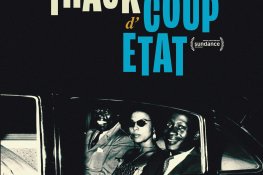On October 9 2015, John Lennon would have been 75 years old. Phil Butland recalled that there was more to his life and art than the Beatles and hippy peace songs
We will have to celebrate John Lennon’s birthday without him. This is because of another, much more tragic anniversary: 35 years ago, on December 8th 1980, Lennon was shot dead by Mark David Chapman. The musician had just released his first album in five years.
People generally remember Lennon as the hippie pacifist who wrote songs like “Imagine”, “Give Peace a Chance” and “All You Need is Love”. He was this person, but he was also much more. His artistic and political vision constantly developed – sometimes forwards, sometimes backwards, but was rarely static. Within his short life time, he was a rebellious rocker, a pliant boy band member, a mystic, and, for a short time, an active revolutionary socialist.
The Influence of working-class and port cities
Lennon’s early development is closely linked to two cities – his hometown Liverpool and Hamburg, where the Beatles learned how to perform. Both are predominantly working-class port cities, and were the first contact points for American sailors bringing rock and roll music to Europe.
In the 1950s, pop music was still a new phenomenon, a breath of fresh air in conservative post-war Europe and America. But by the time the Beatles moved to Hamburg in 1960, the nascent music scene had already undergone its first crisis.
In an interview in August 2015, Lemmy, the lead singer of Motörhead, recalled the first generation of rebellious musicians: “the first time around, we had people like Elvis, Little Richard, Chuck Berry, Jerry Lee Lewis – all them people. And they were gone within two years. Chuck Berry was in jail [for transporting a minor across a state line for immoral purposes]. Jerry Lee’s career had been destroyed by the British press [for marrying his 13-year-old cousin]. Elvis was in the fucking army … And then we got Bobby Rydell and all them ****s. It took us a couple of years to get rid of them, then the Beatles showed up. That was all right.”
Bobby Rydell’s departure from our collective memory is no tragedy. Nonetheless, at the start of the 1960s, the charts were dominated by kitsch bubblegum pop produced by him and his contemporaries. In contrast, the Beatles played songs by black artists such as Chuck Berry, Little Richard and the Isley Brothers – artists who were rarely played on the radio, and whose records were hard to find in record shops.
It was only in port cities like Liverpool and Hamburg that the local youth had access to black American music, shipped ashore by passing sailors. A subculture started to grow, which by-passed the capital cities. By geographical accident, the Beatles found themselves at the centre of a decisive moment in the history of modern music.
Artificial war against the Rolling Stones
The Beatles’ early rebellious phase did not last long. Manager Brian Epstein encouraged Lennon to swap the leather jacket that he had worn on the Reeperbahn for a smart suit and sensible haircut. A phoney war with the Rolling Stones was created, with the Stones depicted as rebels, and the Beatles as nice young men, whom a girl could take back to their parents.
Much of this war was fought through song titles – Jagger implored his fans to “Spend the Night Together”, while the Beatles only offered to Hold Your Hand. Jagger had Sympathy for the Devil, while the Beatles just wanted a Little Help from My Friends. The Stones couldn’t get No Satisfaction, while the Beatles passively suggested Letting it Be.
Nonetheless, Lennon’s songs from the period are still outstanding, and the Beatles were never as mild as their manager liked to portray. But their incomparable chart success was always dependent on a degree of artistic compromise.
British Prime Minister Harold Wilson was quick to recognise the political potential of identifying himself with the Beatles. Wilson’s constituency was in Liverpool, and he took office in 1964, at the peak of Beatlemania. Wilson was also born into the working-class – something which he shared with the Beatles – but not with his conservative predecessor Lord Alec Douglas Home.
Wilson spoke enthusiastically about the “White Heat of Technology” and supported the establishment of many new Universities, Polytechnics and art schools. Particularly the art schools provided a hotbed for future musicians, who took advantage of an education that was denied to their parents. These real developments meant that Lennon and the Beatles felt a natural affinity with Wilson’s Labour Party.
The highpoint of Wilson’s and the Beatles’ mutual admiration campaign came in 1965, when the four Beatles visited Wilson’s office in 10 Downing Street and were made Members of the British Empire (MBEs). Since then many musicians have been similarly honoured, but Wilson was the first leading politician who realised that he could reach a young generation of voters by rewarding pop musicians.
Lennon and 1968.
Three years later, this young generation was starting to lose its patience with Wilson. Many took to the streets against Wilson’s support for the Vietnam War – protests which were directly celebrated in Jagger’s song “Street Fighting Man”.
Lennon’s reaction was much more ambivalent. Like Jagger, he wrote a song about the movement, giving it the promising title of “Revolution”. Yet he sang “if you go carrying pictures of Chairman Mao / You ain’t gonna make it with anyone, anyhow”, and: “when you talk about destruction / Don’t you know that you can count me out”.
Even two months later, you could see how Lennon’s political understanding was developing. In the version of “Revolution” on the White Album, Lennon still sings “you can count me out”, but adds, in a slightly quieter voice “in”.
The year 1968 was a turning point both for the Stones and for Lennon. Jagger and co made their first tentative steps on the slippery slope towards conservatism and tax evasion. And Lennon entered his most radical phase.
In 1969, Lennon returned his MBE to the British queen with the statement “Your Majesty, I am returning my MBE as a protest against Britain’s involvement in the Nigeria/Biafra thing, against our support of America in Vietnam and against ‘Cold Turkey’ slipping down the charts. With love. John Lennon of Bag.” This was just the start.
Radical Appearances
He started to take part in demonstrations, even if his first appearances were somewhat idiosyncratic. At the demonstration for James Hanratty, one of the last victims of the death penalty in Britain, he demonstrated from inside a bag in the boot of a Rolls Royce. He joined a demonstration against nuclear weapons by telephone.
By 1971, he was starting to learn. The journalist Robin Denselow reports as follows: “Wearing denims and a jaunty black cap, he paraded through London carrying a poster ‘Red Mole for the IRA against British Imperialism’, and chanting ‘Power to the People’. The following day, 12 August, he sent £1,000 to the union Fighting Fund for the Upper Clyde Shipbuilders in Scotland.” [Red Mole was a revolutionary newspaper produced among others by Tariq Ali, who conducted many discussions with Lennon at this time]
Throughout his life, Lennon was a committed anti-racist. The Beatles continually refused to appear in apartheid South Africa, and Lennon remained active on this issue. In 1970, British activists successfully sabotaged games of the South African rugby team, The Springboks, incurring large fines. The mother of British socialist Sally Kincaid was one of the activists.
Sally explains what happened next.
“After the Springbok team was stopped from playing by massive numbers of anti-apartheid protesters occupying the pitch the police arrested huge numbers of those occupying. During a meeting to organise fund raising to pay for fines my mum suggested that they ask the Beatles to pay a benefit gig in Aberdeen…. She wrote to john Lennon with the request and he wrote back saying they were unavailable but sent a cheque to cover the fines.”
Political radicalization
Lennon’s political radicalisation was reflected in an artistic radicalisation. Although this was the period when he wrote “Imagine” and “Give Peace a Chance”, these are among the least interesting of his songs of the time. In “Working Class Hero” he called for class struggle against those who “hate you if you’re clever and they despise a fool.” And his political evolution since he wrote “Revolution” is clear in the lyrics of the song “Power to the People“. Now he was singing: “Say you want a revolution… We better get on right away We’ll you get on your feet, And out on the street “.
And then, on January 30th 1972, came “Bloody Sunday”. British troops shot dead 14 unarmed protestors in Derry, Northern Ireland. Lennon was living in New York by now, and participated in the protest there. He quickly released two songs, “Sunday Bloody Sunday” and “Luck of the Irish“, both bitter attacks against British imperialism: “A thousand years of torture and hunger Drove the people away from their land. A land full of beauty and wonder Was raped by the British brigands”.
Lennon 1972 album “Some Time in New York City” is his most explicitly political album. Unfortunately, it was also arguably the last time that he managed to produce an album’s worth of artistically relevant material. This does not mean that he was finished – in the ensuing years, he released (the IMHO highly underrated) “Mind Games“, and recorded the superlative “Fame” with David Bowie. Nonetheless by 1975 he had stopped producing music altogether, and would not do so in the subsequent 5 years.
Retreat in the late 1970s
This meant that, the artistic wave which produced punk, ‘Rock Against Racism’ and the mass mobilisations of British musicians against fascism passed Lennon by. While his contemporary Neil Young was celebrating the Sex Pistols’ Johnny Rotten in the song “Hey Hey My My”, Lennon was silent.
The nadir was maybe in 1975. In New York’s Central Park, activists organised a free concert to celebrate the end of the Vietnam War. The concert was directly across the street from the home of the singer who had issued posters saying “War is Over If You Want It”. Lennon did not even make it to the balcony of his penthouse suite.
How did Lennon sink into passivity so quickly? Part of the answer lies in the state of the US left. In 1972, when the ex-Beatle moved to New York, the momentum from 1968 was already dying down. The FBI had liquidated the Black Panthers. The socialists with whom Lennon did have contact – people like Jerry Rubin – were ultra-leftists with no social base. This meant that the man who once urged Tariq Ali to reach out to young workers, was left with no contact with the working class.
When Lennon started recording again in 1980, expectations were massive. But if we are brutally honest, the music that he produced was largely mediocre. The album “Double Fantasy” contains a few interesting songs and a lot of filler. The posthumously released album “Milk and Honey” is even more forgettable.
Celebrate Lennon’s life
We will never know whether Lennon would have found inspiration again, and to be honest that’s not the most important thing. He had already made a significant contribution. Between 1968 and 1975, he wrote and sang some of the best songs of our – or any other – era. His political commitment of this time is a bonus.
Today, on the anniversary of Lennon’s birth, we should take the opportunity to celebrate his life and mourn his death. But we should be singing much more than just the dirge “Imagine”.
The original version of this article appeared in German on the marx21 Website on October 9th, 2105, the 75th anniversary of John Lennon’s birth:



